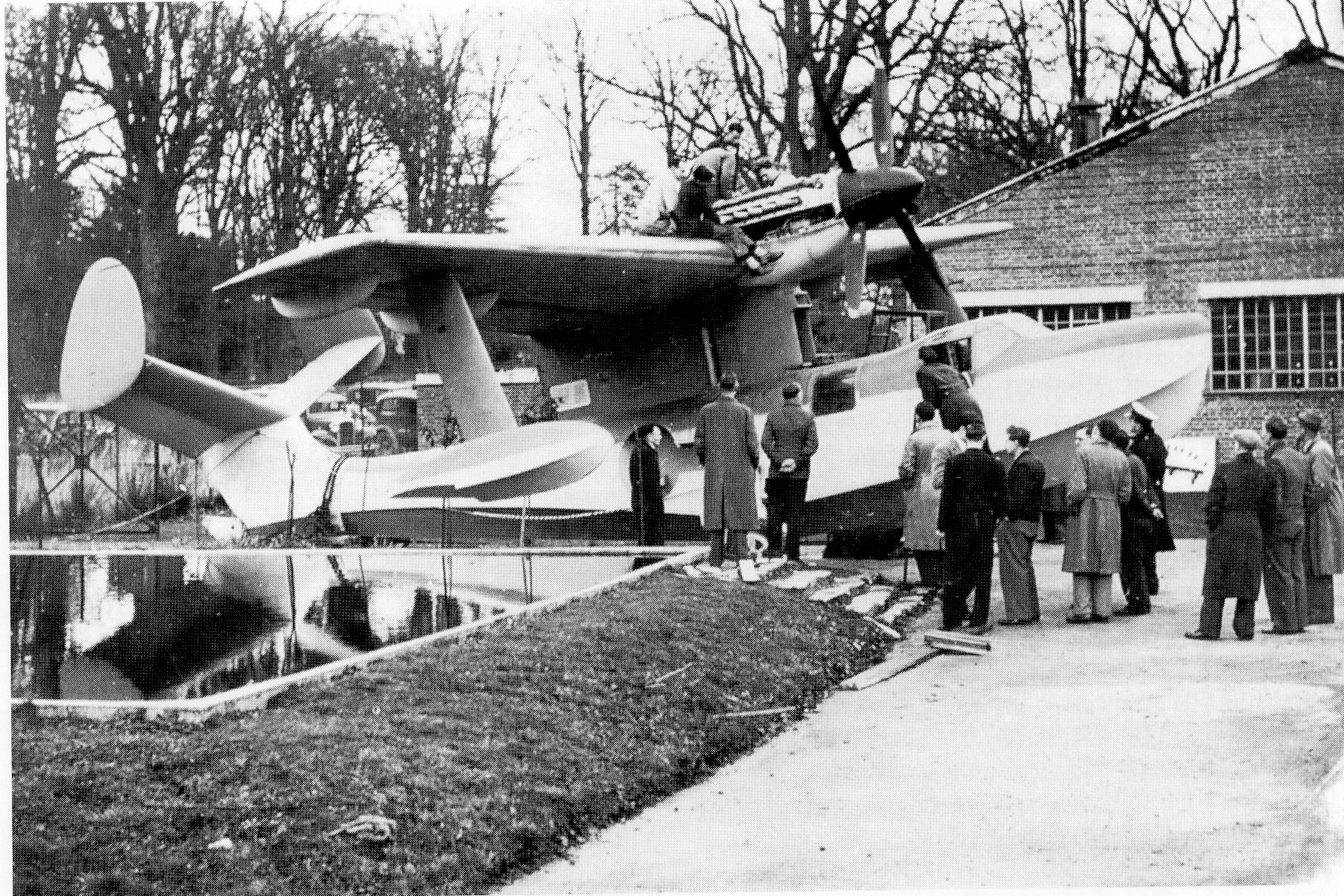Problems Resolved
Between Easter and summer of 1941 a quick way had to be found to achieve a pressurised cockpit for the Spitfire Mk VI. At that time the R.A.F. did not have a suitable fighter to compete with enemy aircraft bombing from altitudes of 40,000 to 45,000 feet (12,200 to 13,700 metres). Research had gone on into this problem since 1939, and the staff were now able to achieve a cockpit pressure of 2 psi, having called upon the experience gained with the cockpit for the high altitude Wellington bomber being developed at Weybridge in Surrey, together with Rolls Royce engine engineers. This led to the Marks VI and VII Spitfires, and later to pressurised cabin aeroplanes.
In a bid to get much-needed roller bearings from Sweden, a Spitfire on floats was required to fly into and land on a Norwegian fjord to collect bearings smuggled in from Sweden by the Norwegian underground. Hard and long hours were worked on this, and when the aircraft took off for trials on Southampton Water, it took over 2 miles (3.2 km) to rise from the water, causing much worry and concern among those involved. During a flight over the Channel, the pilot tried to return over Bournemouth Bay area, only to be fired upon by our coastal defences damaging the aircraft and floats. Evidently Coastal Command had not been advised of the flight and the gunners, not identifying it, opened fire. Eventually the problems were overcome and the plane operated with success from Scottish lochs, supported by a team of people from Hursley.
Another episode was the development of the ejector seat, which was built by Martin-Baker Aircraft Limited whose managing director and chief designer was Jimmy Martin, a larger-than-life character acknowledged to be very rough but extremely brilliant. However, the person regarded as the real hero in Martin-Baker was Benny Lynch, who has the distinction of being the first person to be ejected by an ejector seat from an aircraft.
Benny Lynch on ejector seat test rig. Photo: © Martin Baker.
Also he literally sat in on all the early ground experiments. Benny Lynch’s recognisable characteristic was his handlebar moustache, which he twisted with sophisticated panache after each experiment. These early trials took place opposite the experimental hangar, where the area was covered with hundreds of straw bales to cushion the fall of Lynch and his seat. The launching apparatus was set up and the seat, initially with a dummy man, rocketed into the air. Unfortunately, when it landed on the straw bales the rockets were still burning and set fire to the straw. The ensuing conflagration caused a great deal of panic and a few red faces, in more ways than one, and Lynch must have been relieved that a dummy was used for this first test! Frank Houghton was in charge of ejector seat experiments, which later became a very successful life-saving device.
 Seagull aircraft outside experimental hangar
Seagull aircraft outside experimental hangar
Laminar-flow wings were developed at Hursley for the Spiteful, as were all the templates, gauges and the jigs, etc. The main visible feature was the absolutely smooth surface with no screw or rivet protrusions. To achieve new standards of surface smoothness, it was decided to heat the large area skin panels with electric blankets, so they would expand prior to pinning, and contract on cooling to form a very tight surface skin over the structure avoiding the problem of ‘anting’ (looseness between ribs). Certainly this operation resulted in a drum-tight skin which was superior to anything produced before. In the first use of electric blankets, there was a point where several overlapped and, when the current was switched on, smoke poured out causing some panic - the electricity was hastily switched off and the fire put out. Eventually the gleaming machine was completed, and transported to High Post for trials. A team of girls from the factory, armed with lamb’s wool buffs and polish, maintained the gleaming surface after flights.
Unfortunately, it came to a sad end, crashing and killing the pilot Frank Furlong on 13 September 1944. The long enquiry afterwards established that, while the wings would flex and recover to their original shape in flight, the control rods inside the wings for the ailerons remained bent and jammed against the cannon gun doors, depriving the pilot of essential control.